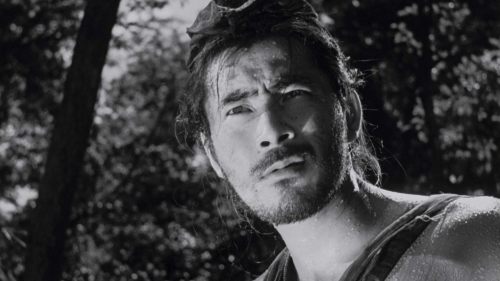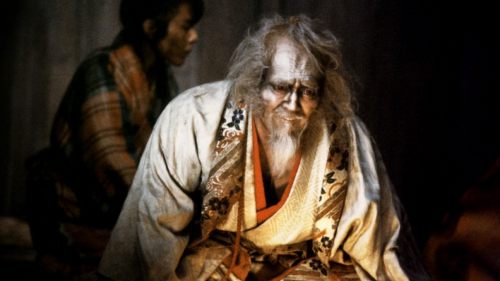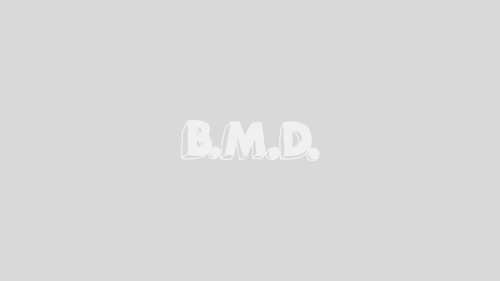THE HIDDEN FORTRESS: Kurosawa And The Crowded Frame
Two’s company, three’s a crowd, and four is too many for most directors to manage. Akira Kurosawa, however, wasn’t most directors. Like many, my first introduction to his work was through researching what sort of films influenced George Lucas, and since this December is dedicated to exactly those kinds of films (from The Dam Busters to 2001: A Space Odyssey and beyond) it’s fitting that Kurosawa’s The Hidden Fortress gets to be the last film I examine for Star Wars month before The Force Awakens.
There’s something uncanny about Kurosawa if you’re only used to watching American studio films. A formulaic familiarity that exists only on the fringes when it comes to his performances and visual composition. As a product of American film schools myself, I can attest to some degree that there exists a relatively strict visual parlance with regards to how dialogue is covered, or how scenes must flow in the edit. That’s not to say that any one way to shoot and cut a film is inherently better than the others, but Kurosawa, being his own editor, was always able to smoothly integrate the two interrelated processes, perhaps better than most. In fact, according to film historian Donald Richie, he even considered the editing process more important.
What are we really talking about when we talk about editing? To the untrained eye, it could be anything from the cuts you can see to the cuts you can’t see, or the transitions between scenes, or even between shot selections, but in the case of Alfonso Cuaron’s Gravity, one of the best edited films in the last few years, it’s as simple as when not to cut. Granted, Gravity is inherently different from most other films because of how much of it was sewn together digitally, and how much of the editless edit could be created ‘artificially’, so to speak, but it’s less a case of visual trickery and more simply an application of pre-existing principles, the kind employed by Kurosawa himself.
In many of his films, Kurosawa was able to use combinations of different shots within the same take, or ‘shots’ as we tend to define them in terms of the character’s size within the frame, medium shot, close up, or what have you. Movement of character and movement of camera each tell their own story, and by using these to create portraits of various sizes over the course of a single shot, an entirely new story can be told. Take for instance the opening shot with two bickering peasants, as the camera follows them from the rear. The pace of both the actors and the camera is somewhat uneven as the scene unfolds, such that their size in the frame changes depending on what they’re talking about, but the kind of shot itself begins to change as well once they turn to each other and we see them in profile, and one of them even walks backwards for a moment so we can see him in full. Later, when Toshiro Mifune’s General Makabe is looking for them, he moves towards the camera and creates a closeup, before turning 90 degrees as the camera follows him and looks over his shoulder.
This is by no means a style unique to Kurosawa, plenty of directors have incorporated it into their work (Brad Bird uses it in both animation and live-action), but what seems to separate him from the rest of the crowd is, well, the crowd. Perhaps it’s the fact that I’ve only ever lived in crowded cities, but the crowd scene has always fascinated me, and directors who can command large groups of people while balancing the inherent paradox of such a scene – the fact that this singular group meant to represent an individual idea is itself made up of individuals – are the ones whose works I tend to gravitate towards. Ava DuVernay’s Selma is another modern example, using ‘the people’ as a collective to represent a moment in time, their physical movement embodying the Civil Rights movement, and yet each individual face and character tells its own story.
The Hidden Fortress does both these things, and much of its first half is concerned with the logistics of the war that’s just ended. Who won, who lost, who’s been captured, and who’s doing the capturing. Tahei and Matashichi find themselves amidst an uprising of imprisoned Akizuki soldiers against their Yamana captors, and Kurosawa doesn’t deign to focus on the two lowly protagonists alone. Instead he turns them into faces in the crowd, though not unrecognizable ones, as the crowd itself moves on the Yamana, descending down hills and staircases, and reacting to the soldiers around them, as if this scrappy and haphazard group were a batallion on the battlefield.
The use of the crowd as bodies or an amorphous collective has been a mainstay of cinema for as long as there have been cameras, but Kurosawa’s specific use of a collective of faces has the ability to elevate any given scene. It acts as a magnified reaction shot, something that in itself uses performance and screen direction to tell its own story. Another example of this is his 1963 film High & Low.
Kurosawa’s adroit use of ‘the crowd’ also allowed him to distill that crowd, and extract from it his two bickering main characters, Tahei and Matashichi. The Hidden Fortress is a story of princesses and warriors told through the eyes of two simple folk who have no actual stake in the war (at least none beyond monetary interest), and it’s through their movement and their perspective that we get to experience most of these events. When we first meet Mifune’s Rokurota Makabe, we look up at him as he stands atop a hill, glaring down at Tahei and Matashichi as they squabble over gold, and we as audience members are placed alongside them. There are perhaps a handful of instances where Tahei and Matashichi don’t share the frame, mostly because they’re in separate locations, and one in particular where they almost kill each other as the camera moves into individual closeups. Their physical relationship is central to the film because it usually determines the direction of any of their fights or debates, which in turn leads to decisions that affect the outcome of the plot.
A lesser director might’ve used standard shot-reverse shot coverage for Tahei and Matashichi’s conversations, but that would’ve foregone the other equally important elements in the frame, from their spatial relationship, to the background and the other characters. Kurosawa on the other hand, likes to keep all the pieces in play at once, which is why you can pause his films at any given moment and find something of interest to look at. Of course, this would be incomplete without the performances that he gets out of his actors, often operatic, but always imbued with specific movements and postures that help tell the story.
The plot bears plenty of similarities to the original Star Wars. It opens on a bickering duo splitting up during wartime before they reunite upon capture to set out on a quest for a feisty princess trying to avenge the destruction of her kingdom, and the duel between former friends Makabe and Tadokoro is similar in blocking and pacing to the first ever lightsaber battle. The other films have a clear resemblance to The Hidden Fortress as well, the side-by-side horseback fight shot on a long lens in order to make the background whiz by is a clear precursor to the speeder chase in Return of the Jedi, and princess’ use of decoys is even borrowed by The Phantom Menace and Attack of the Clones. Don’t take my word for it though. If there’s one Kurosawa fan you should listen to, be it about direct influences or subtle techiques, it’s George Lucas himself.



